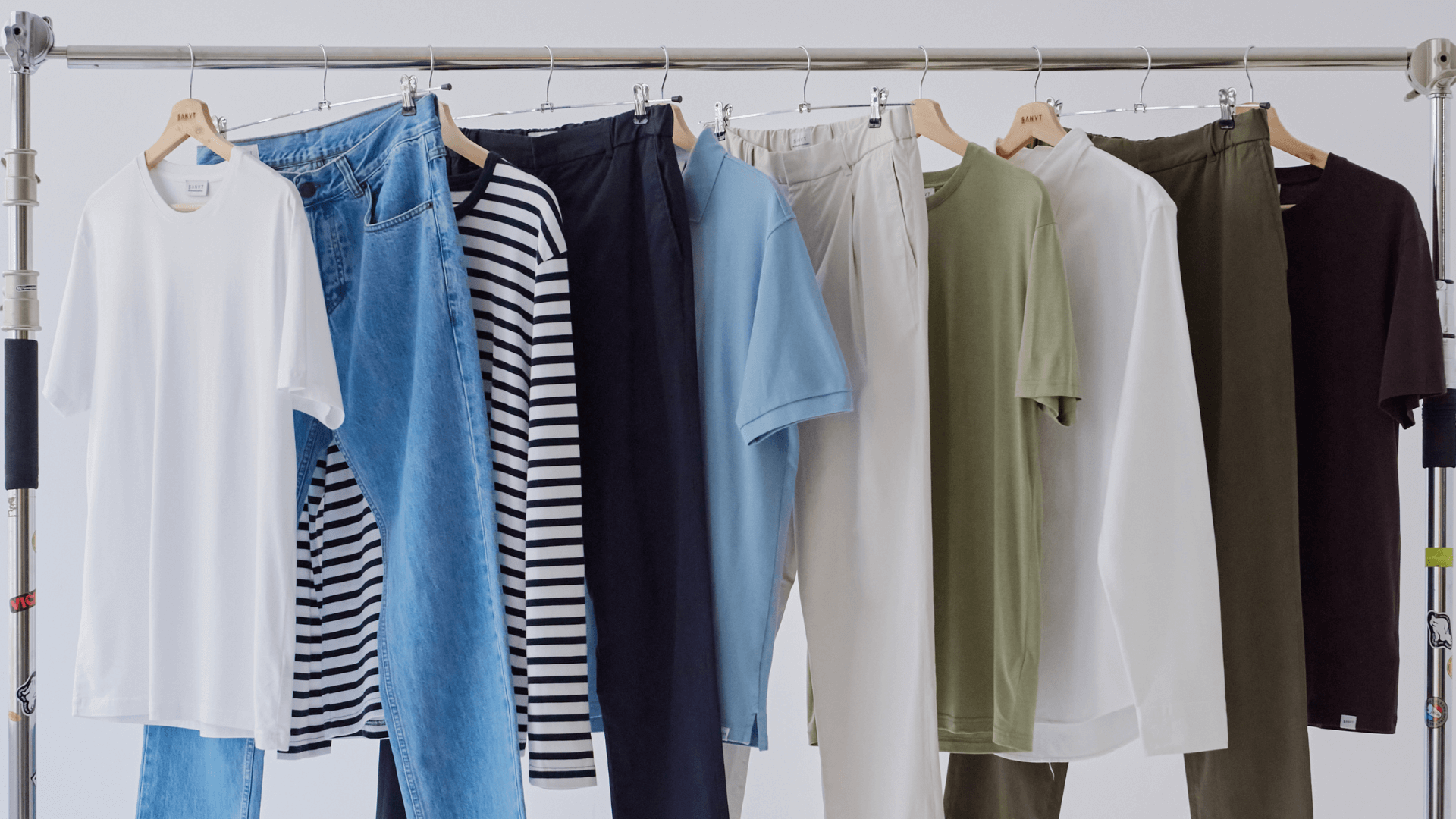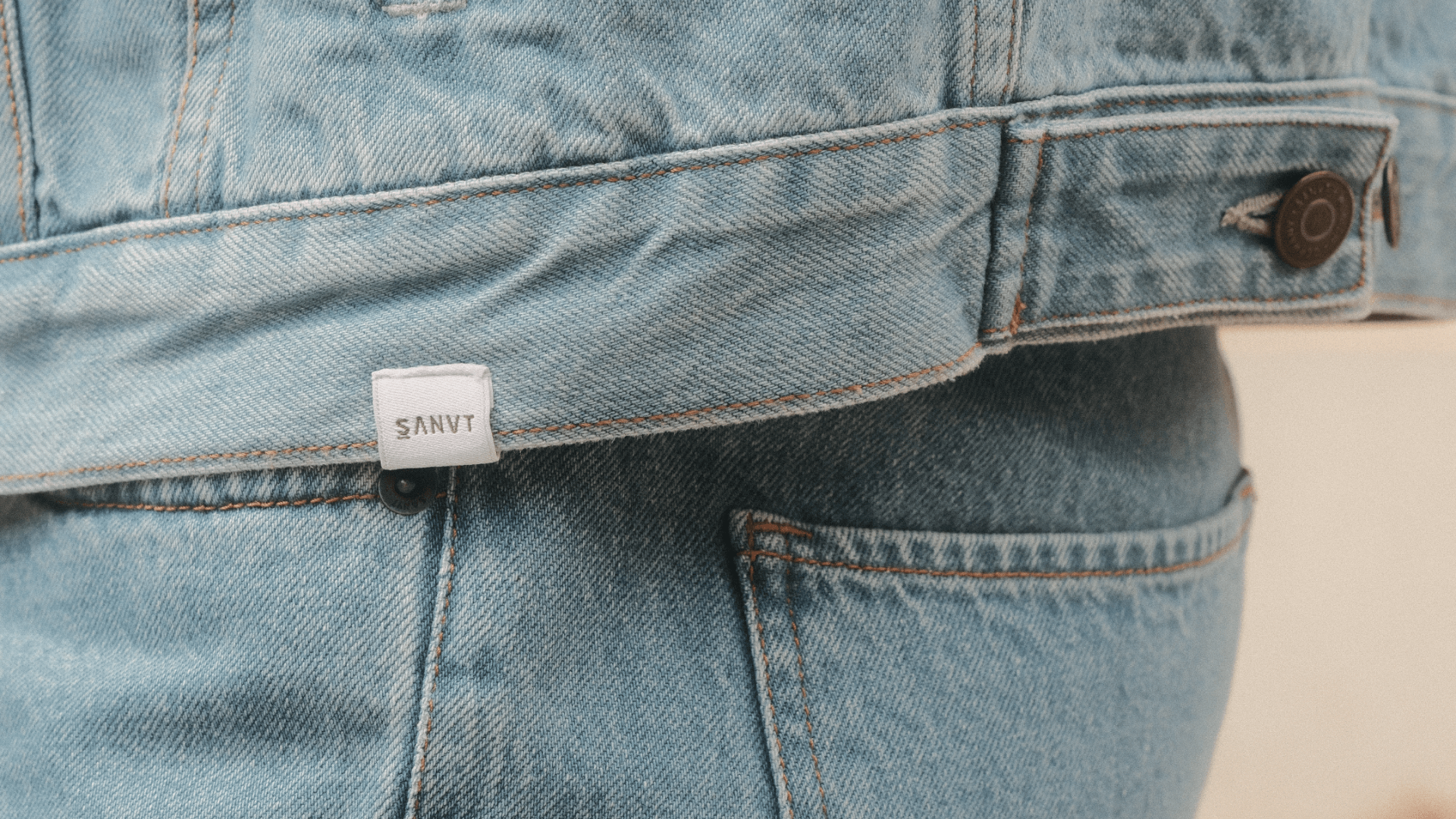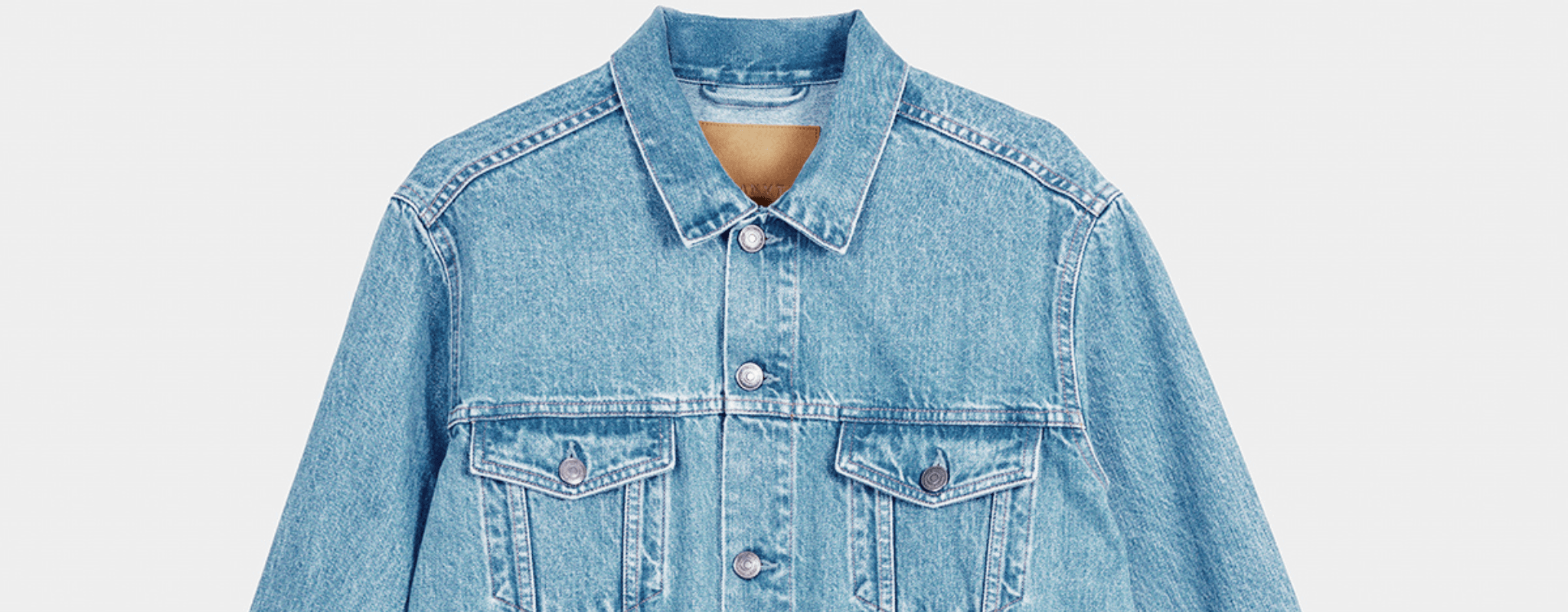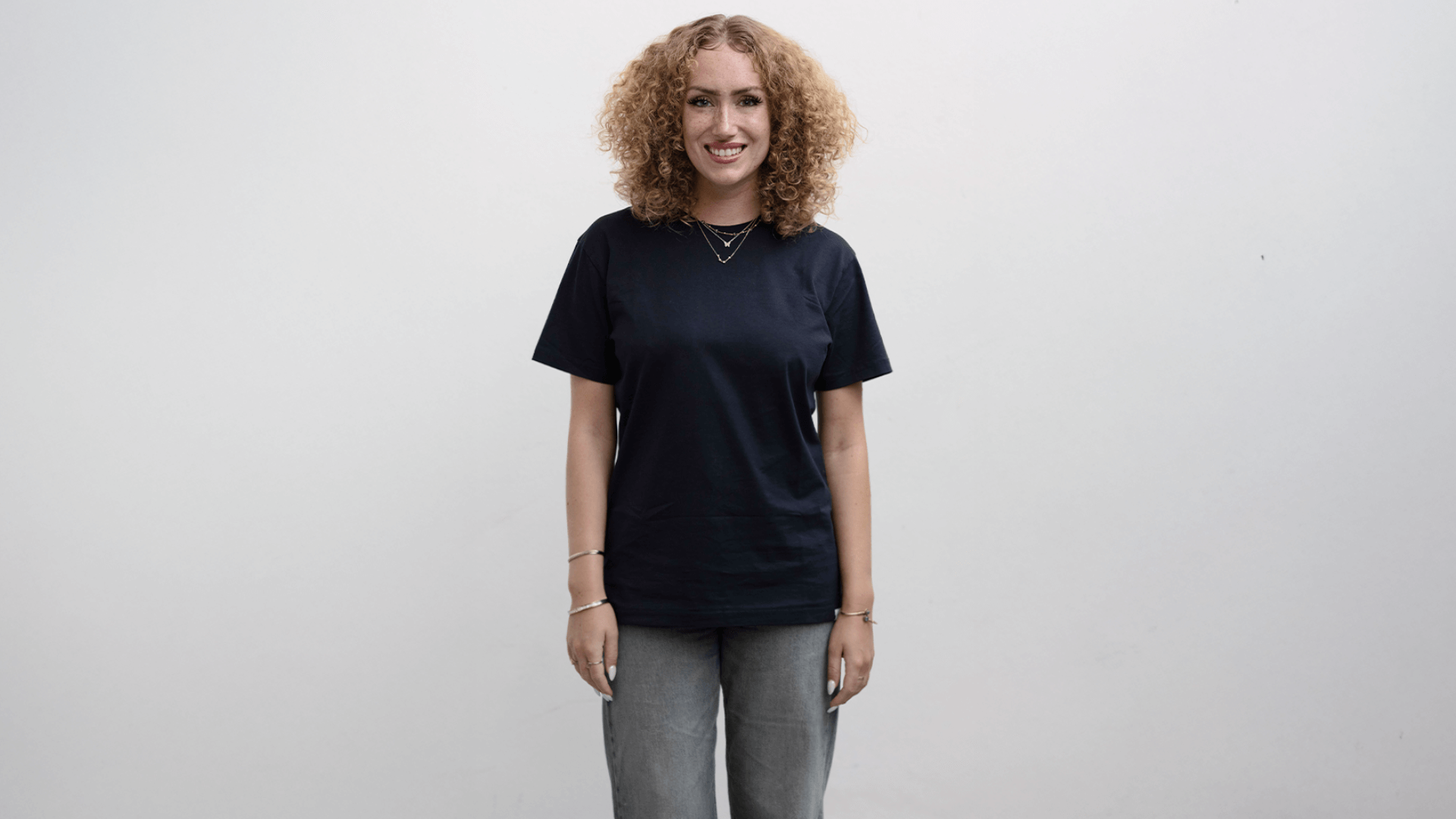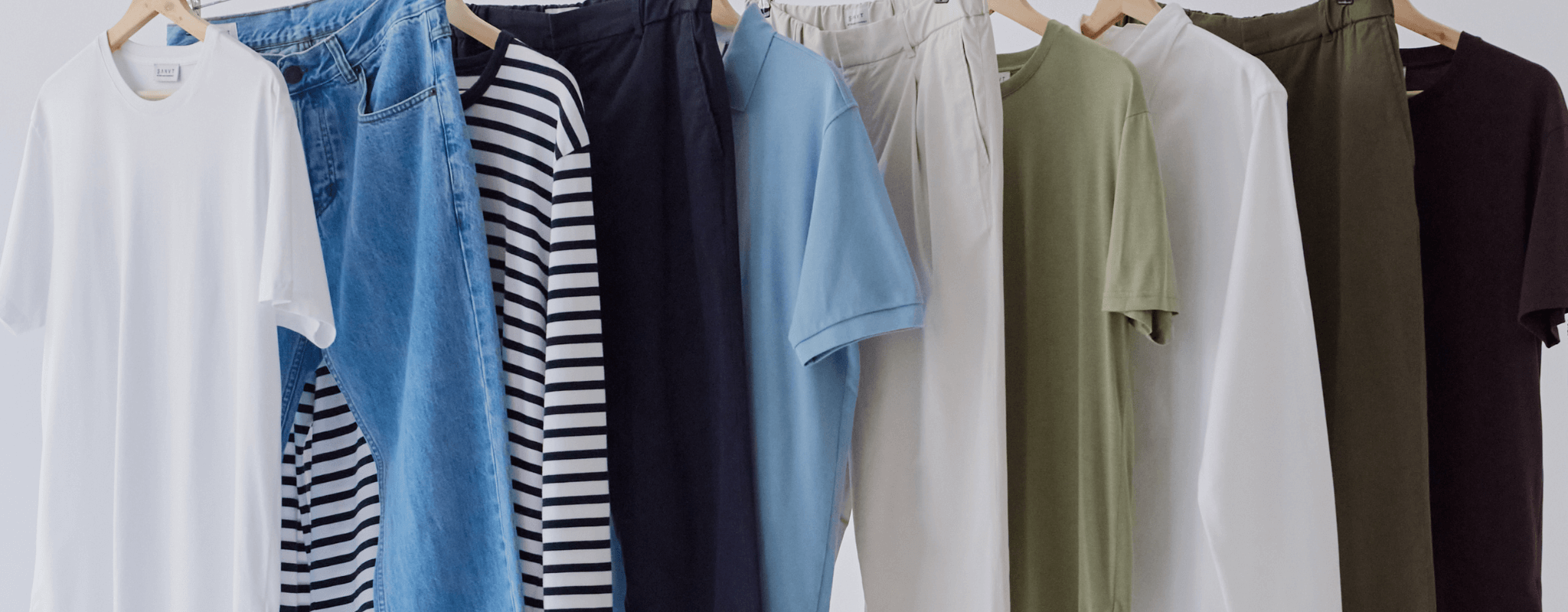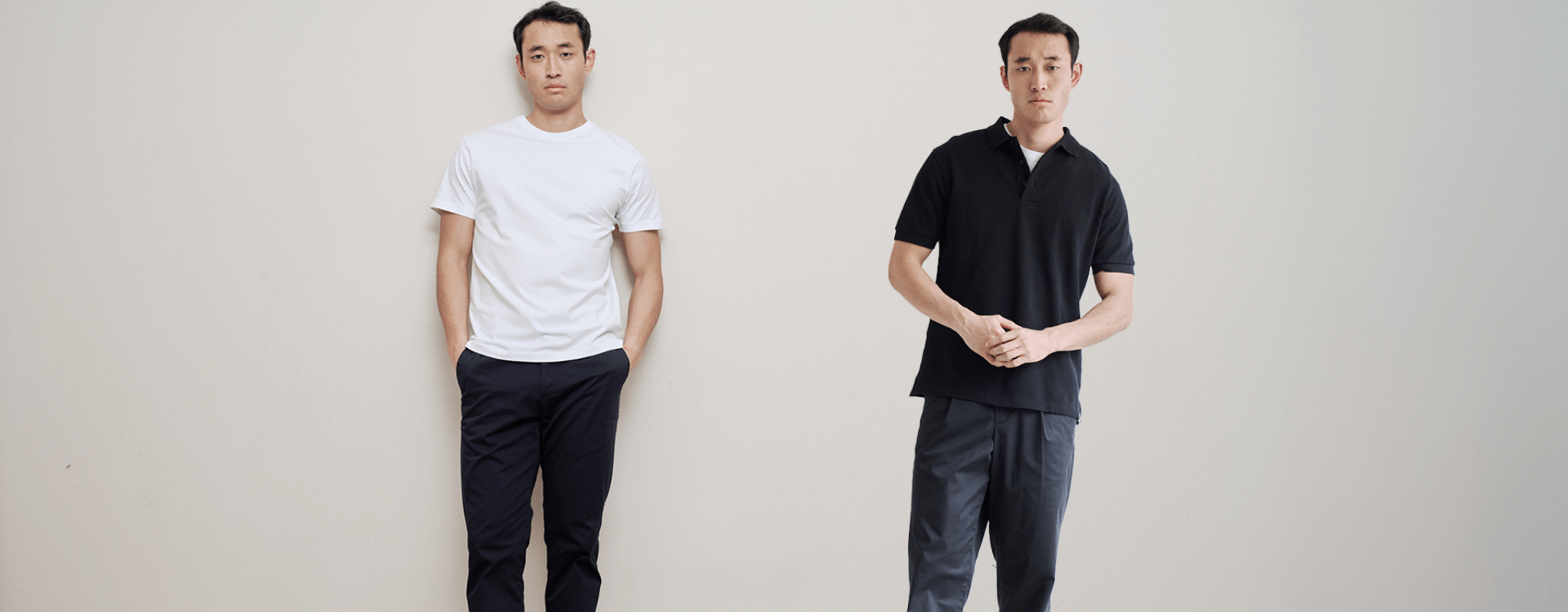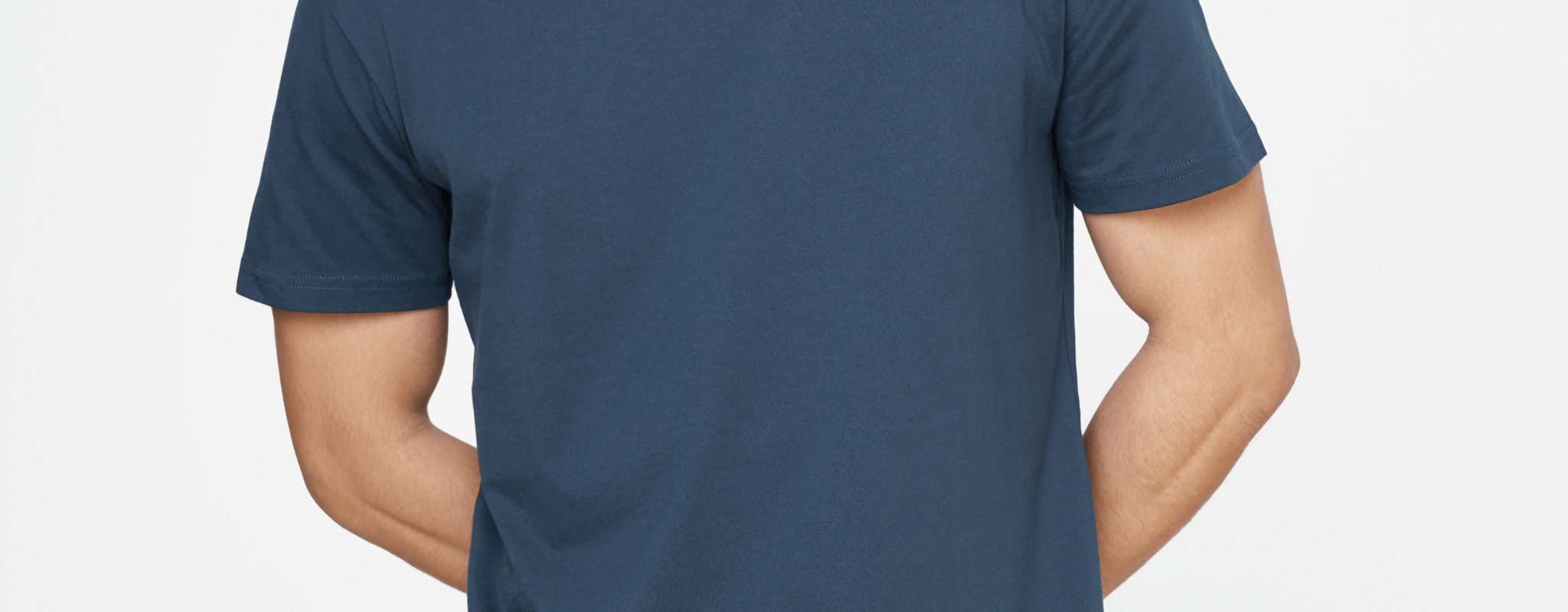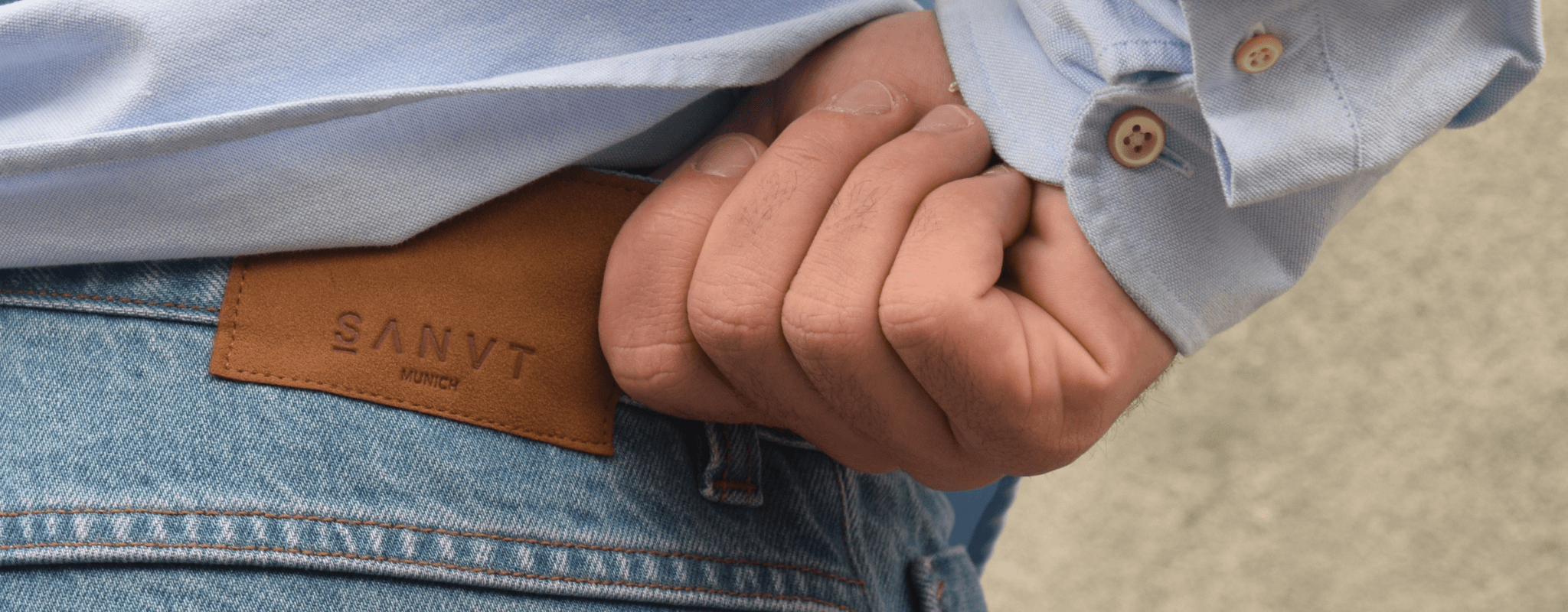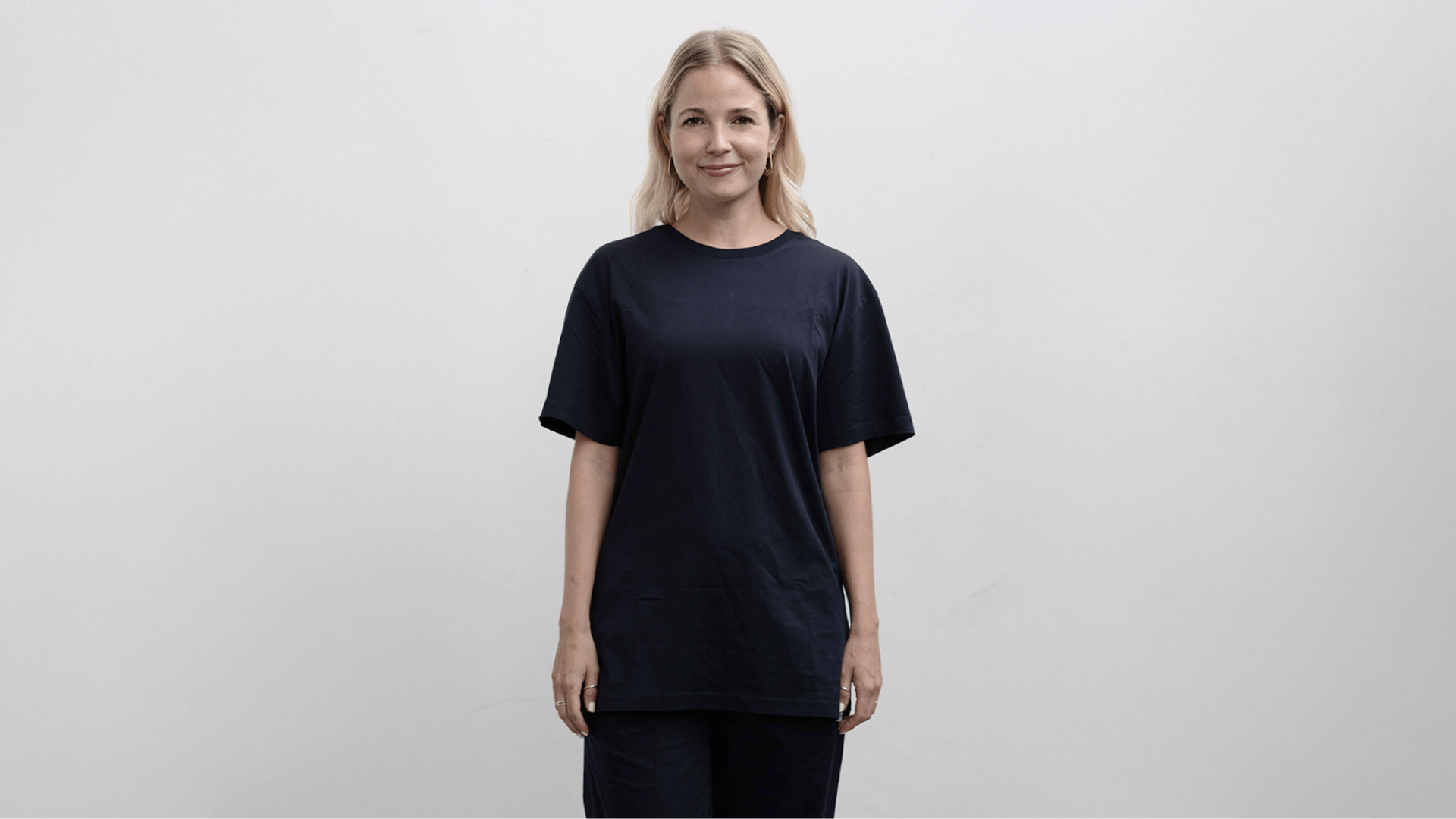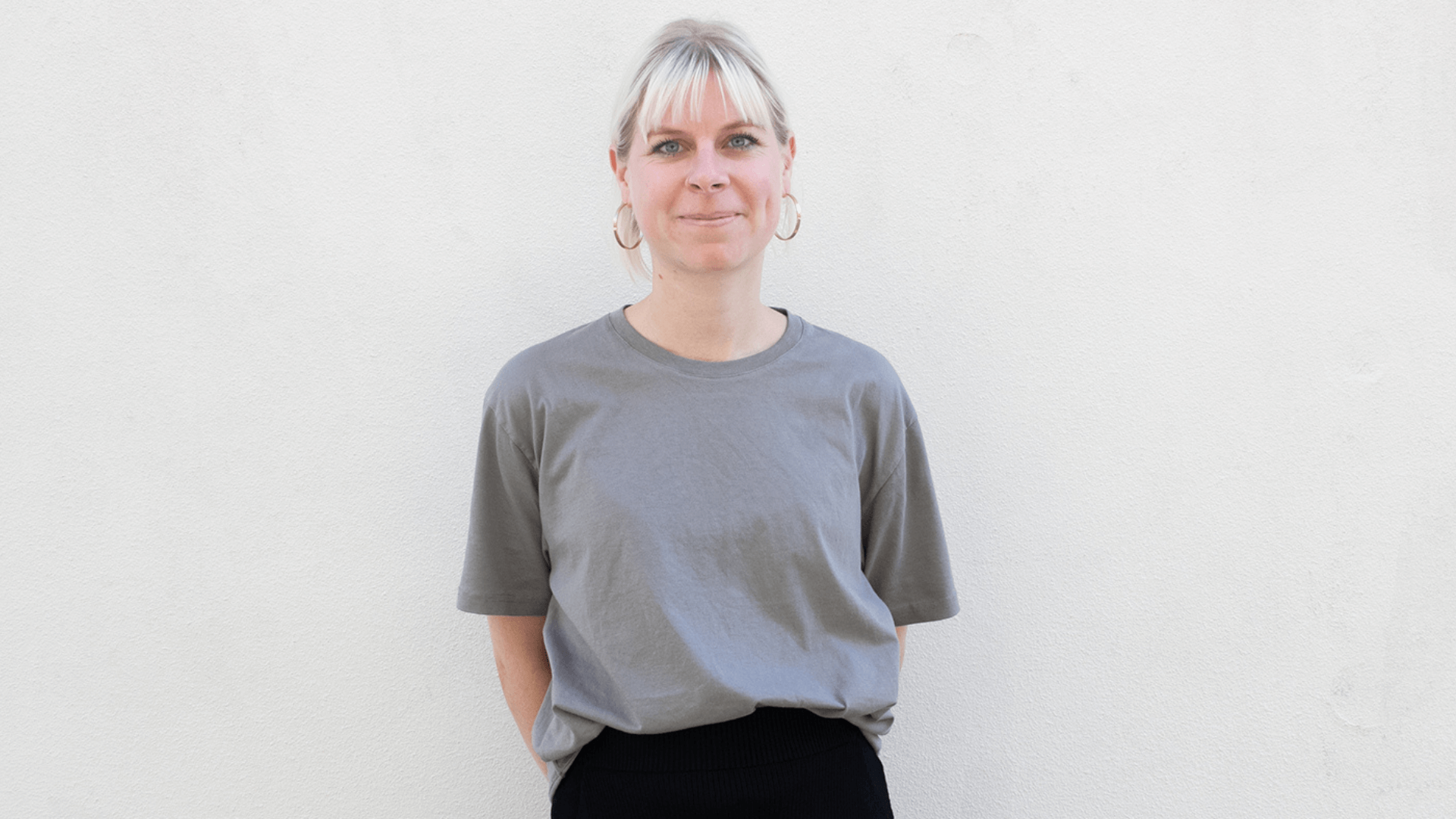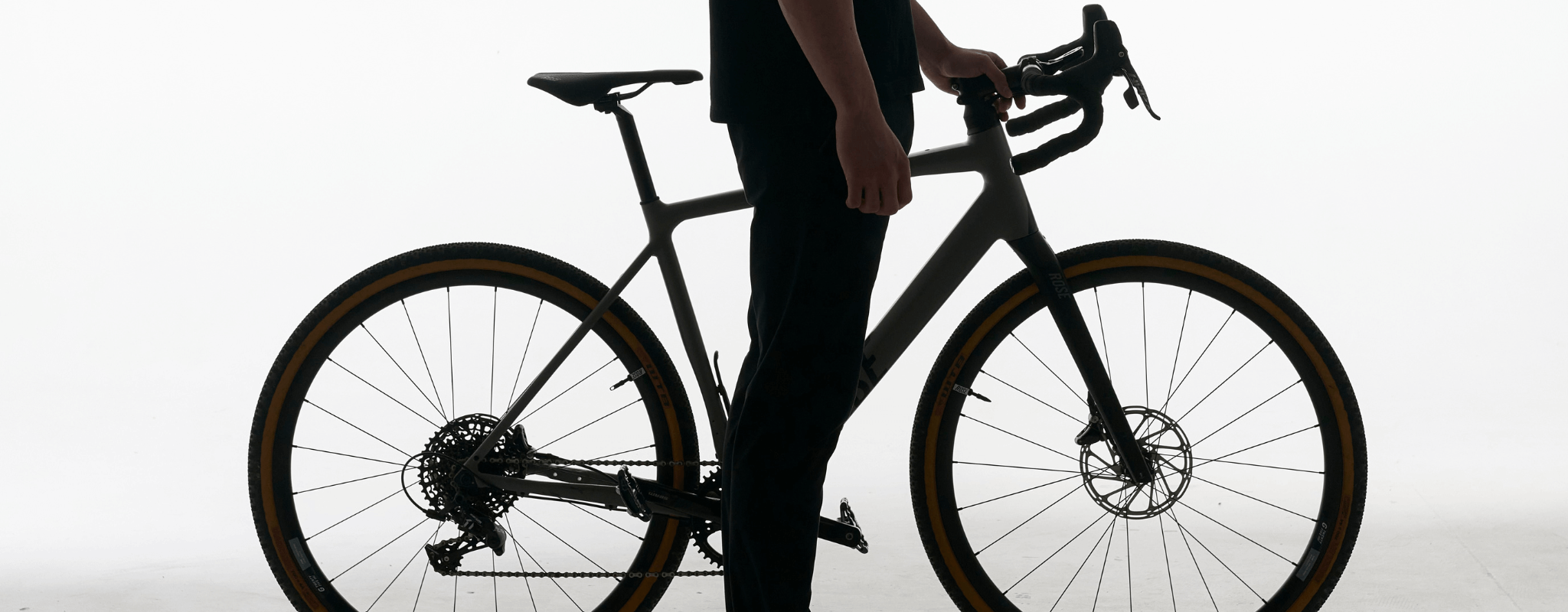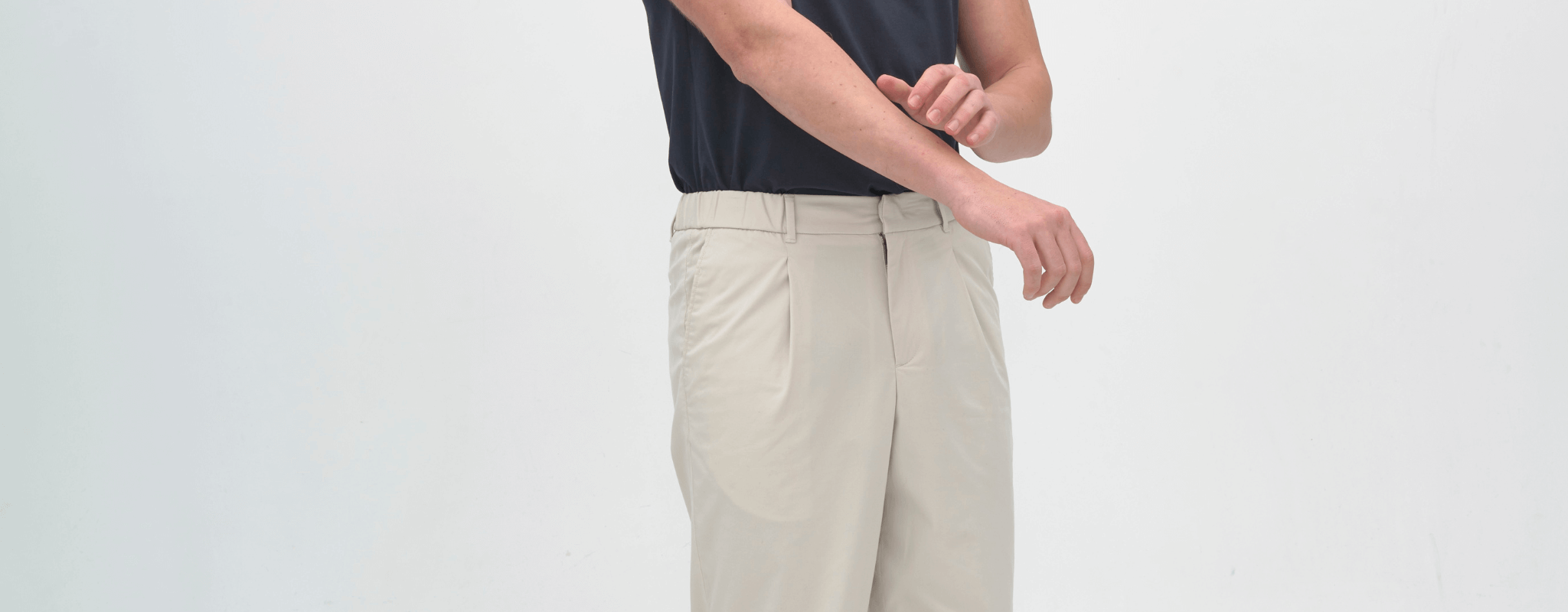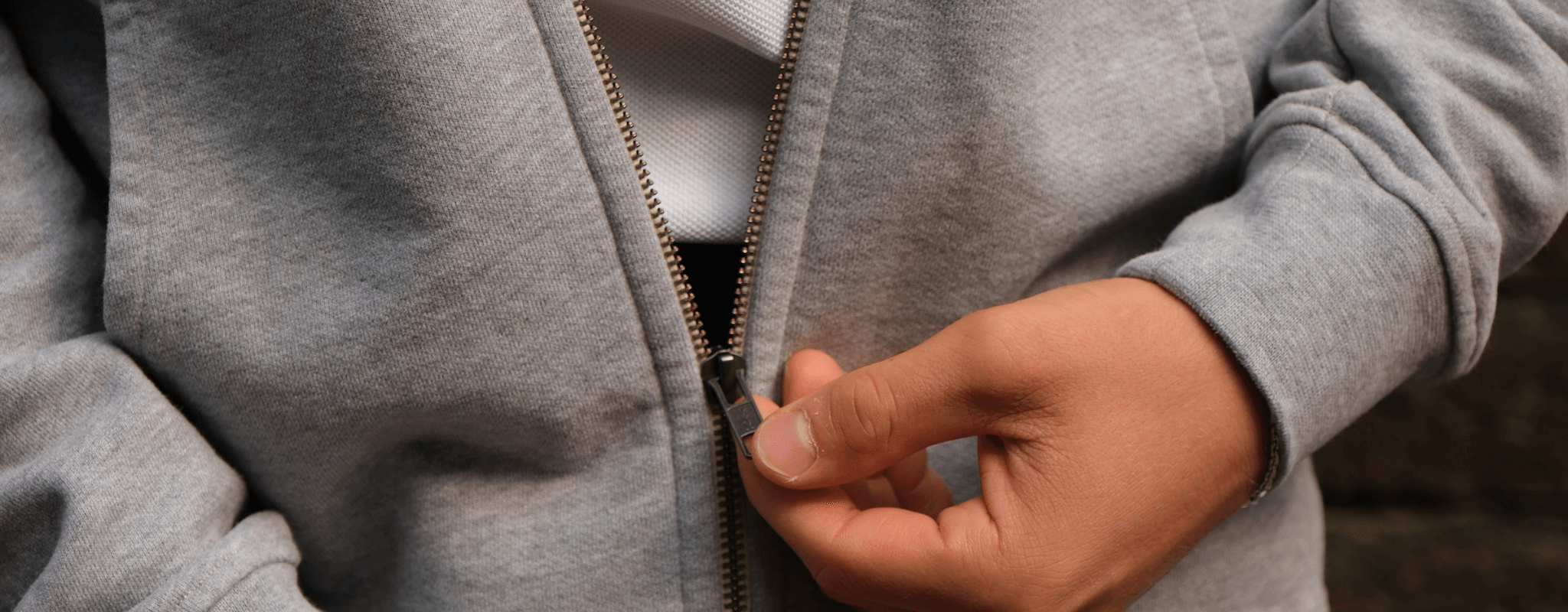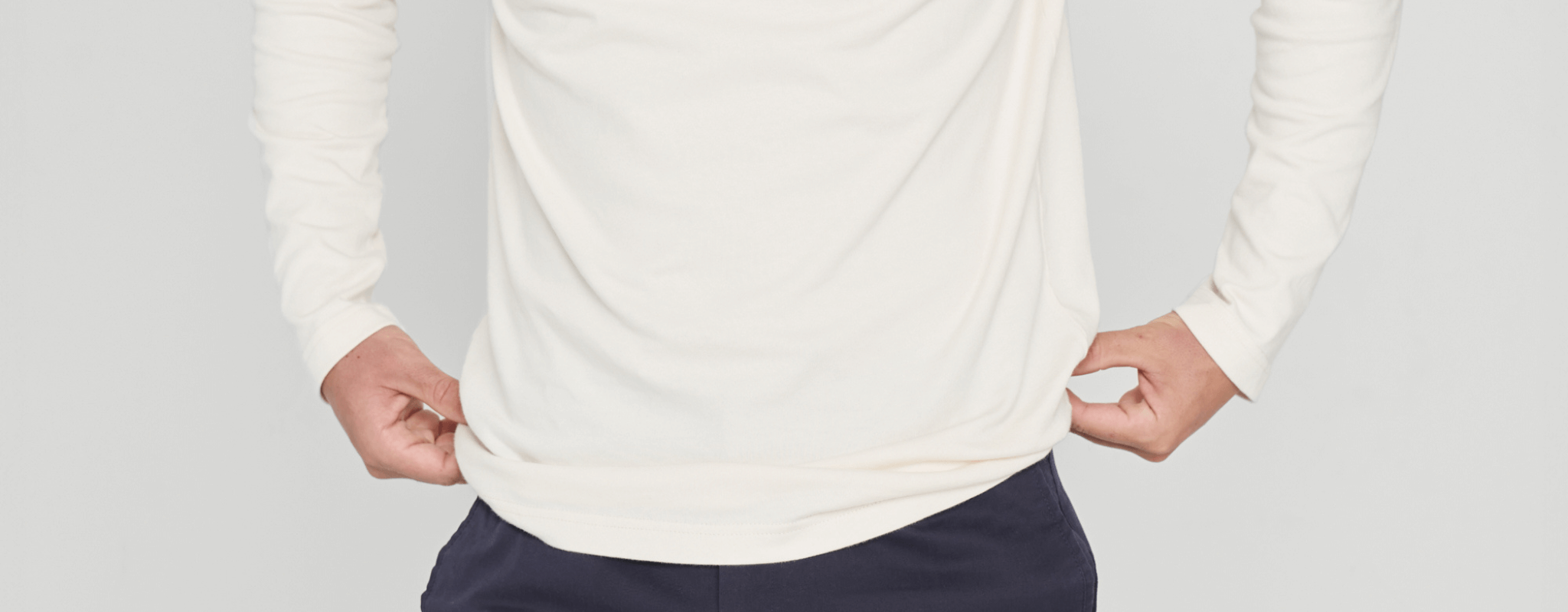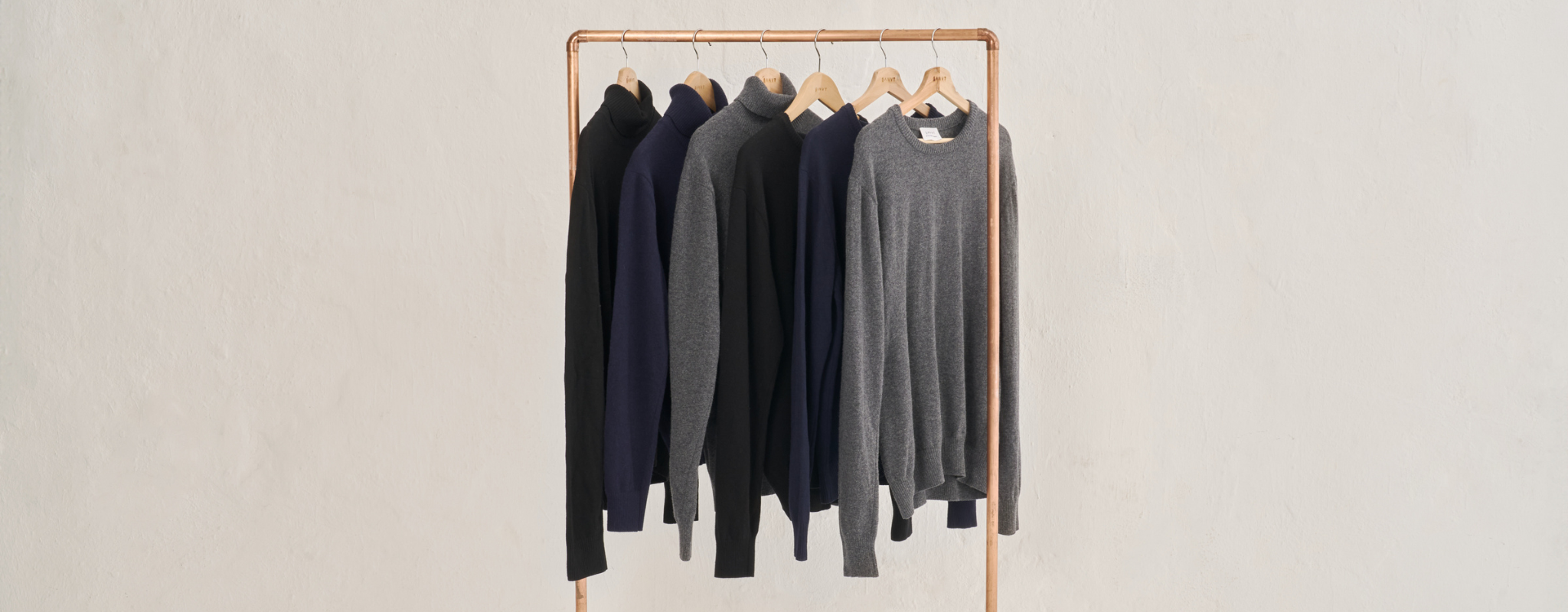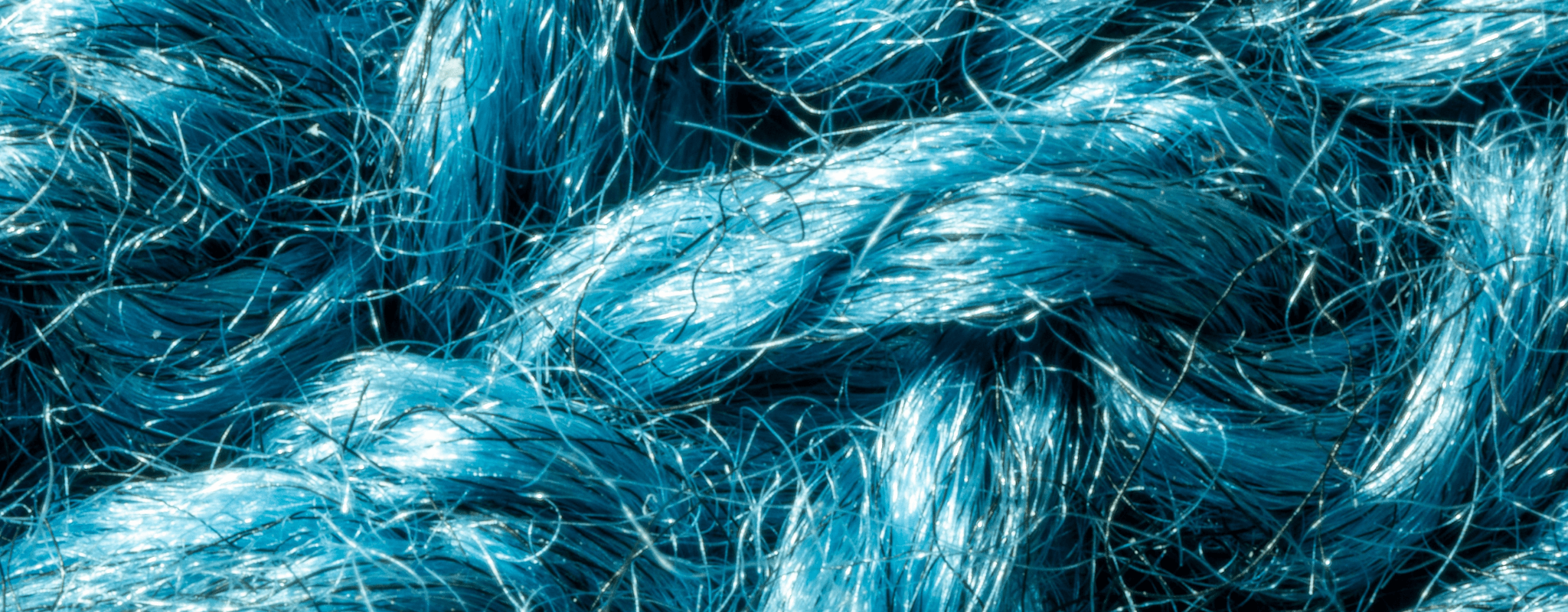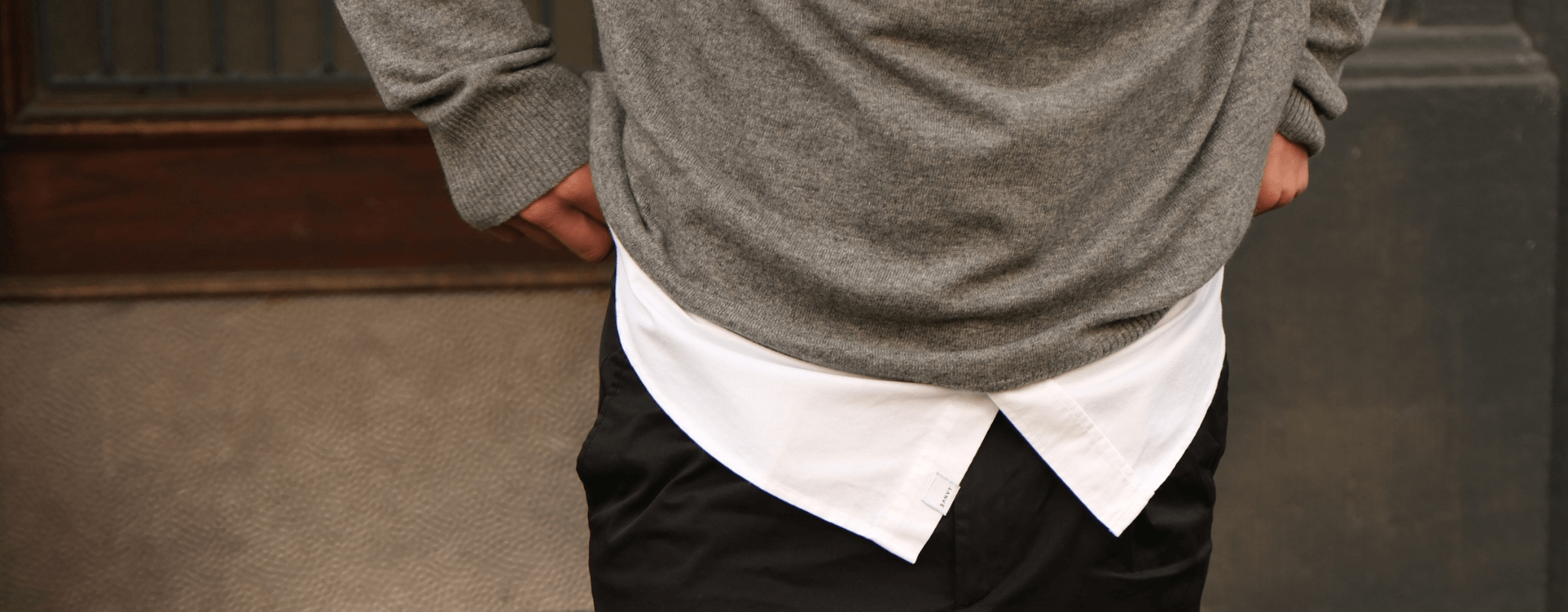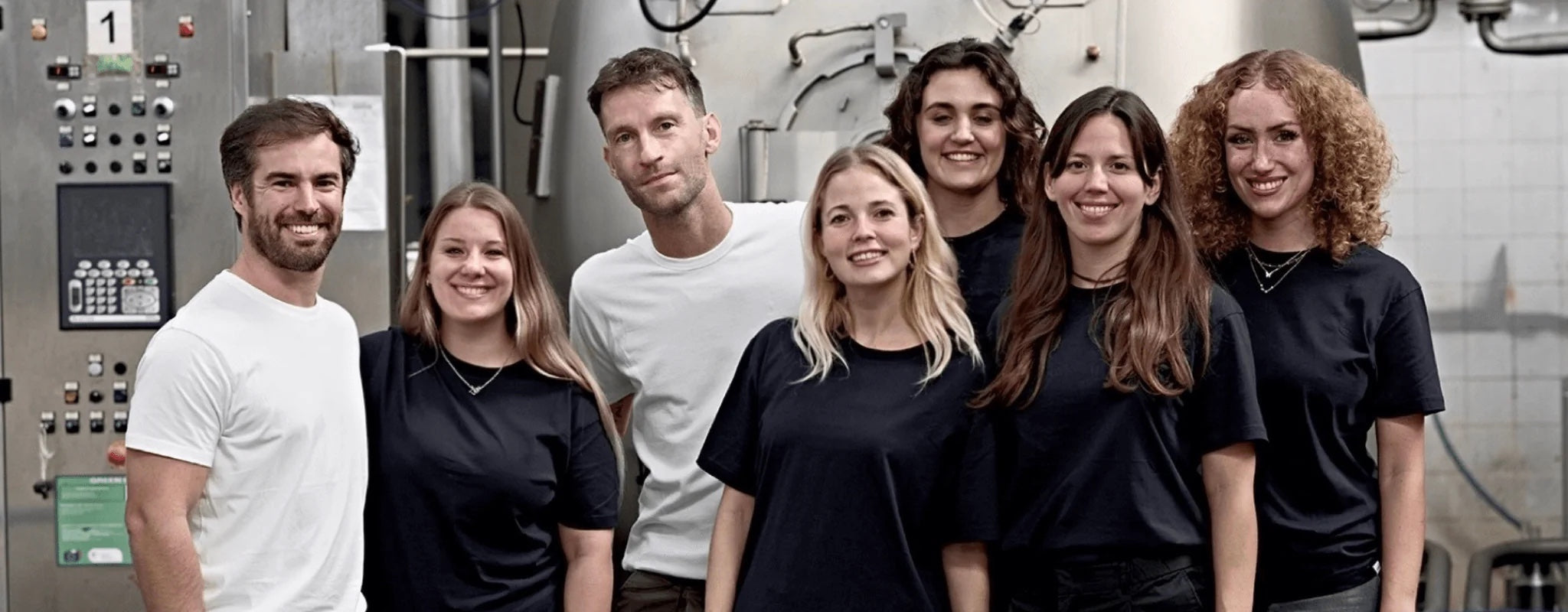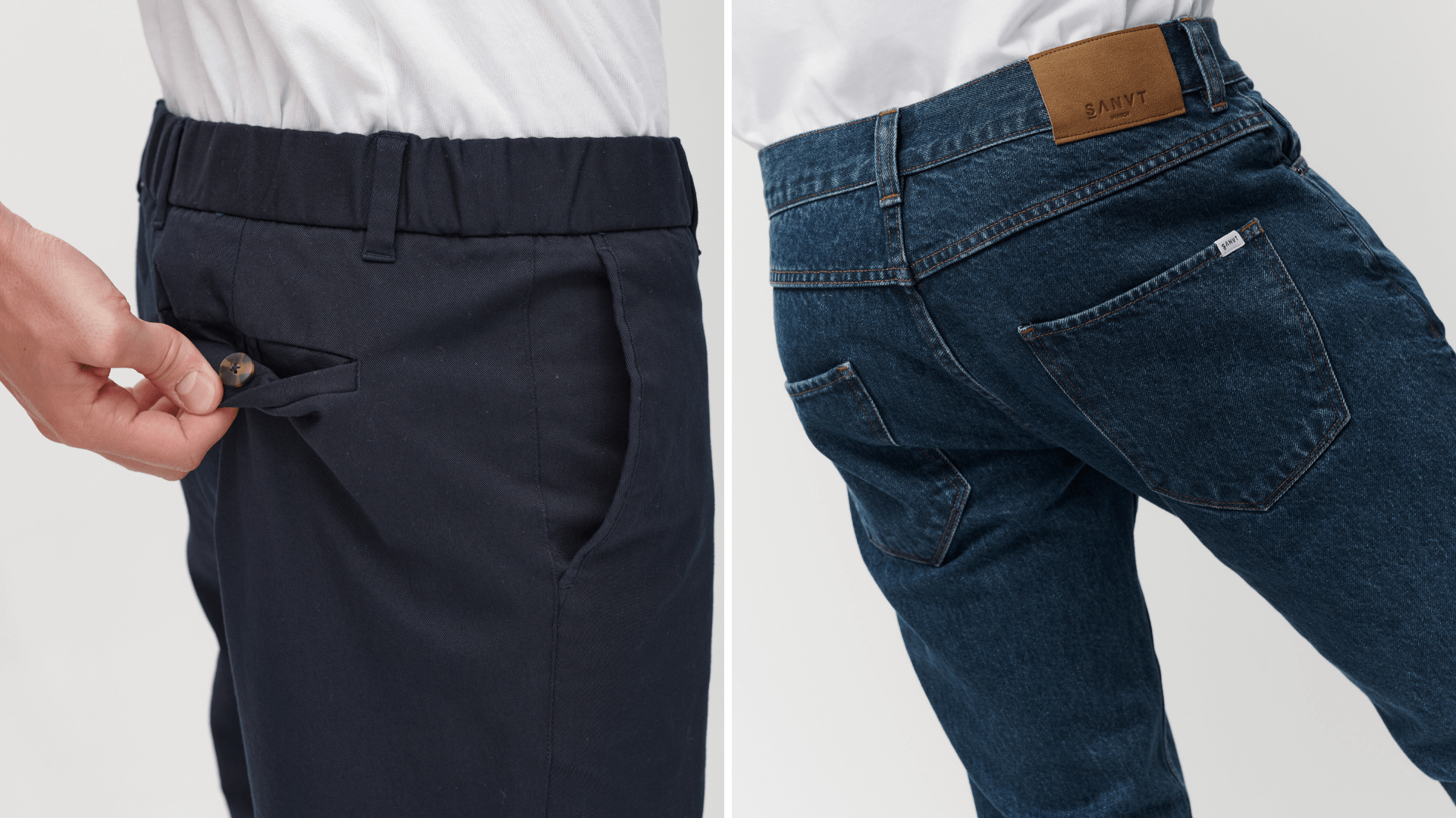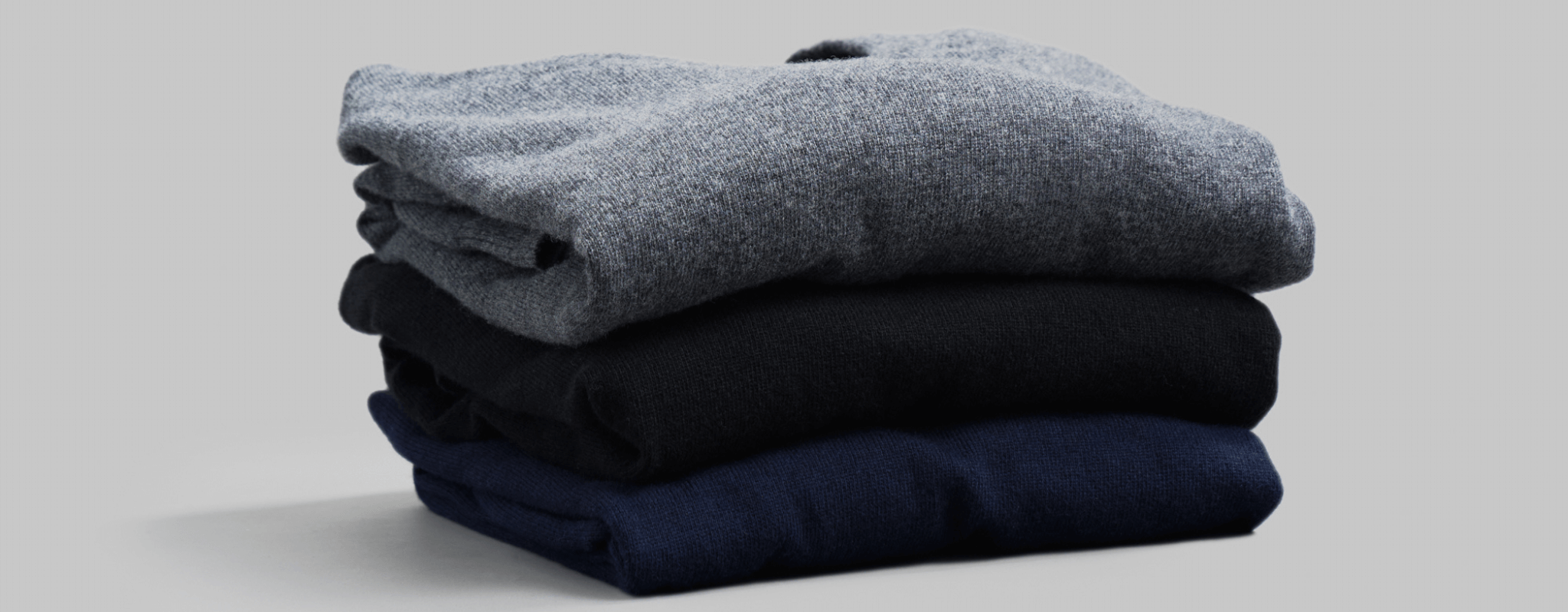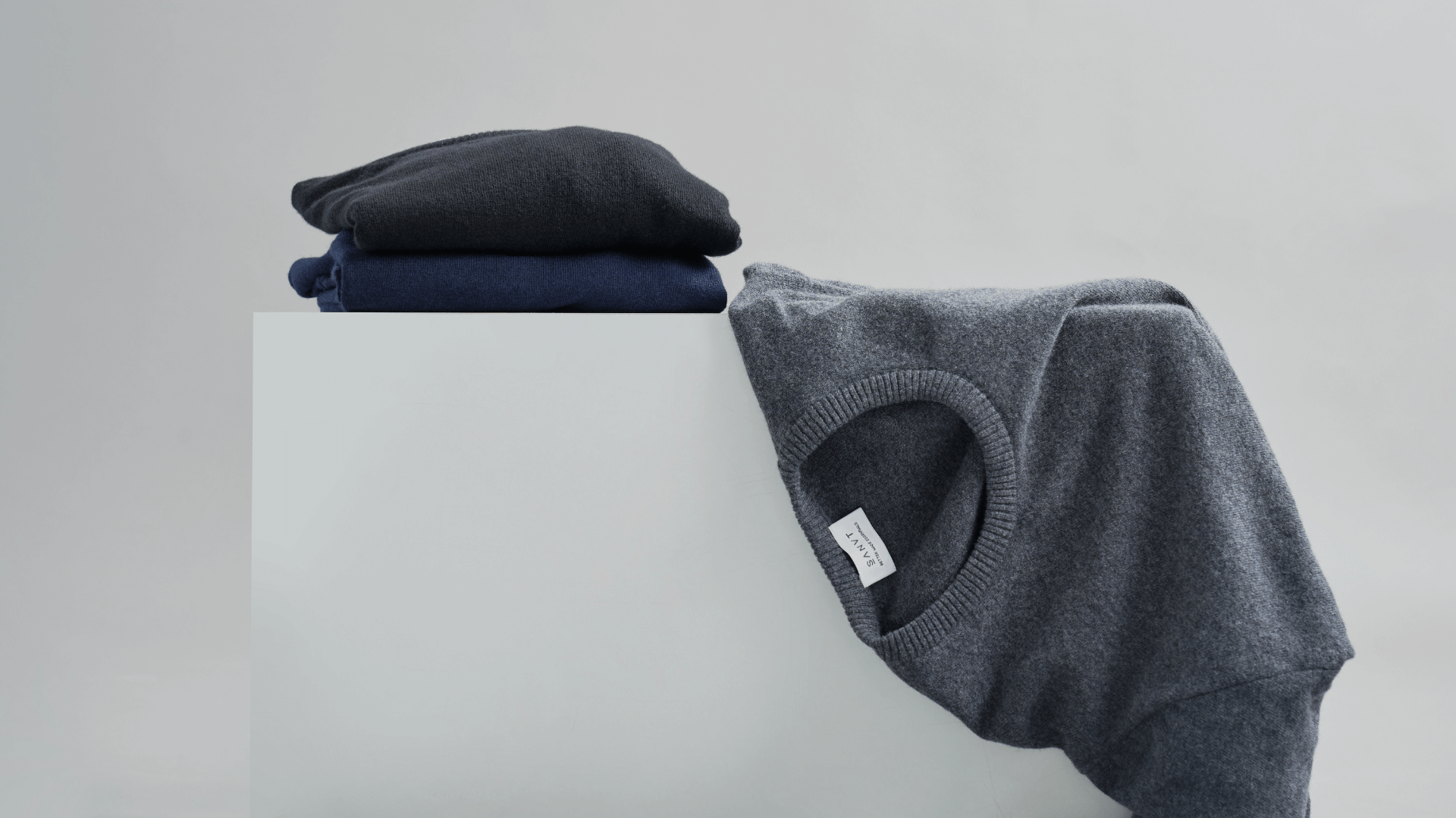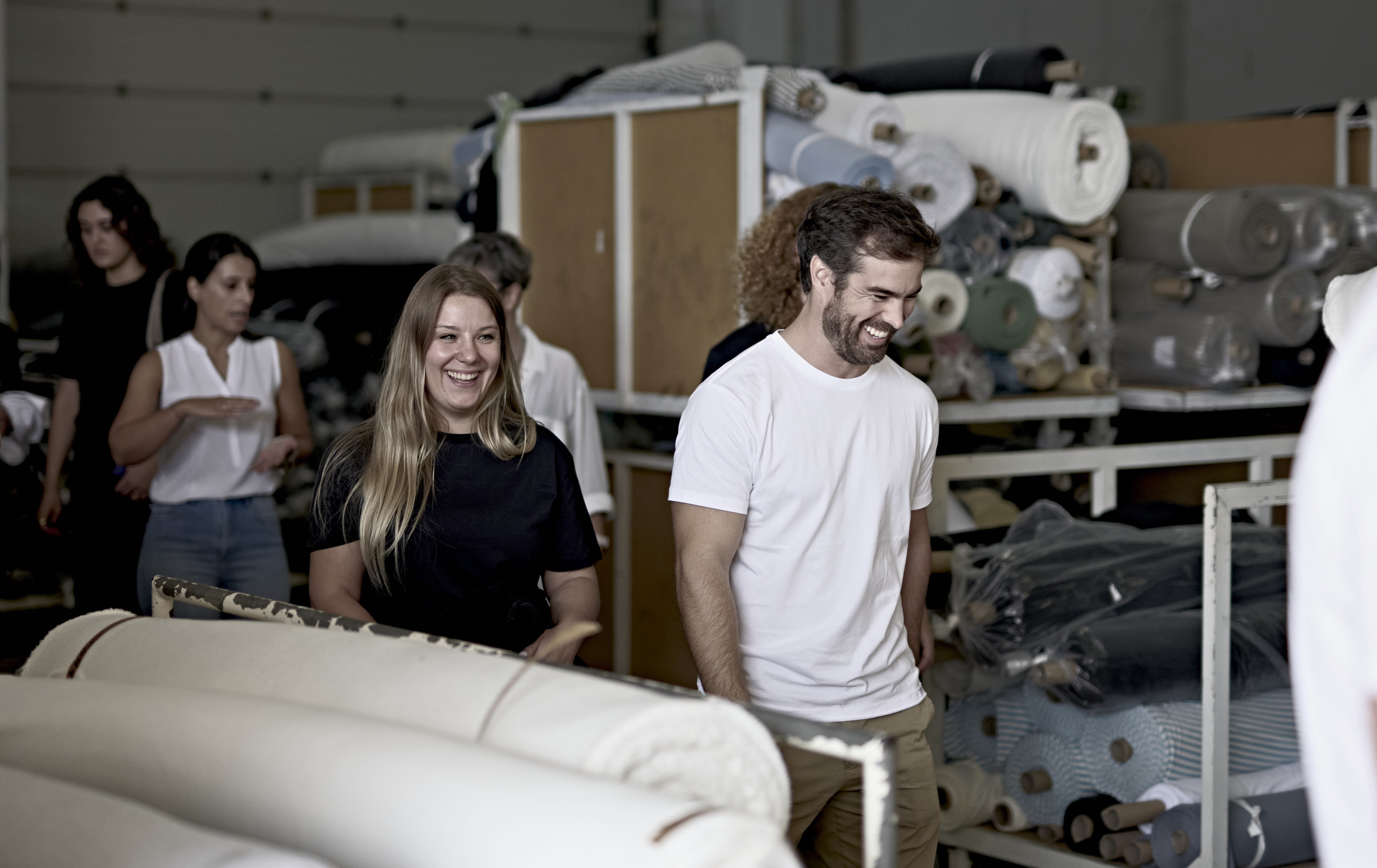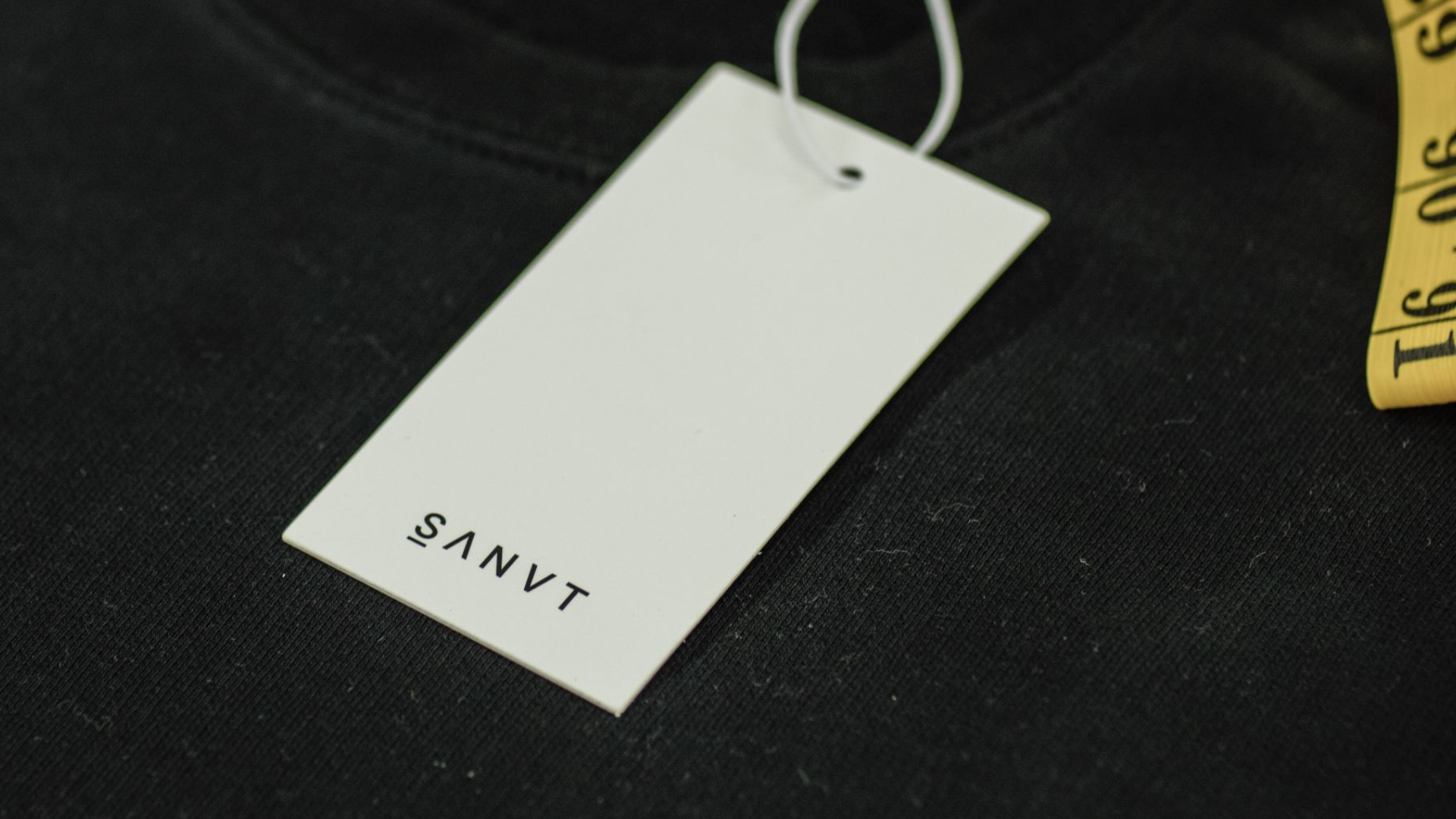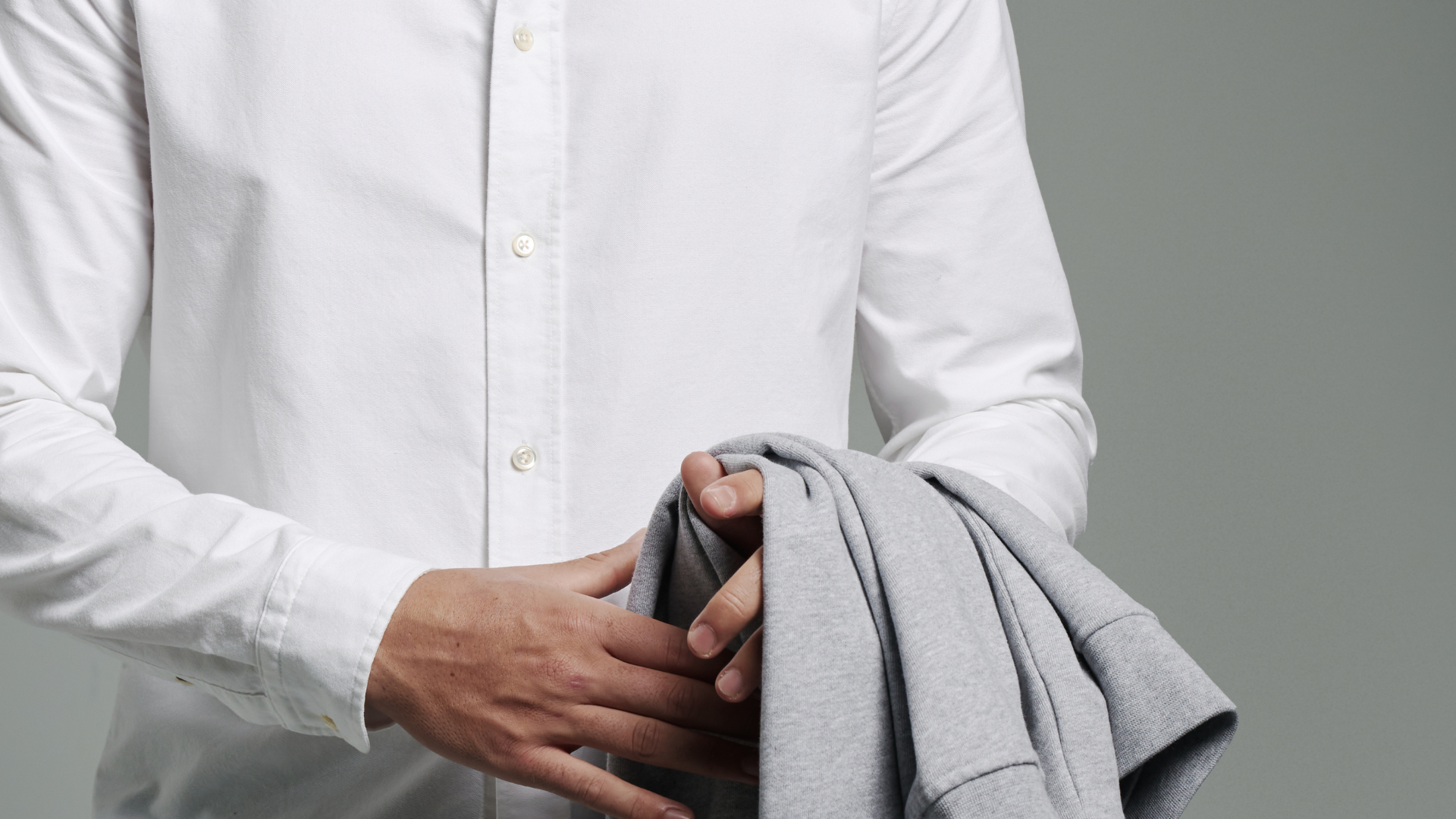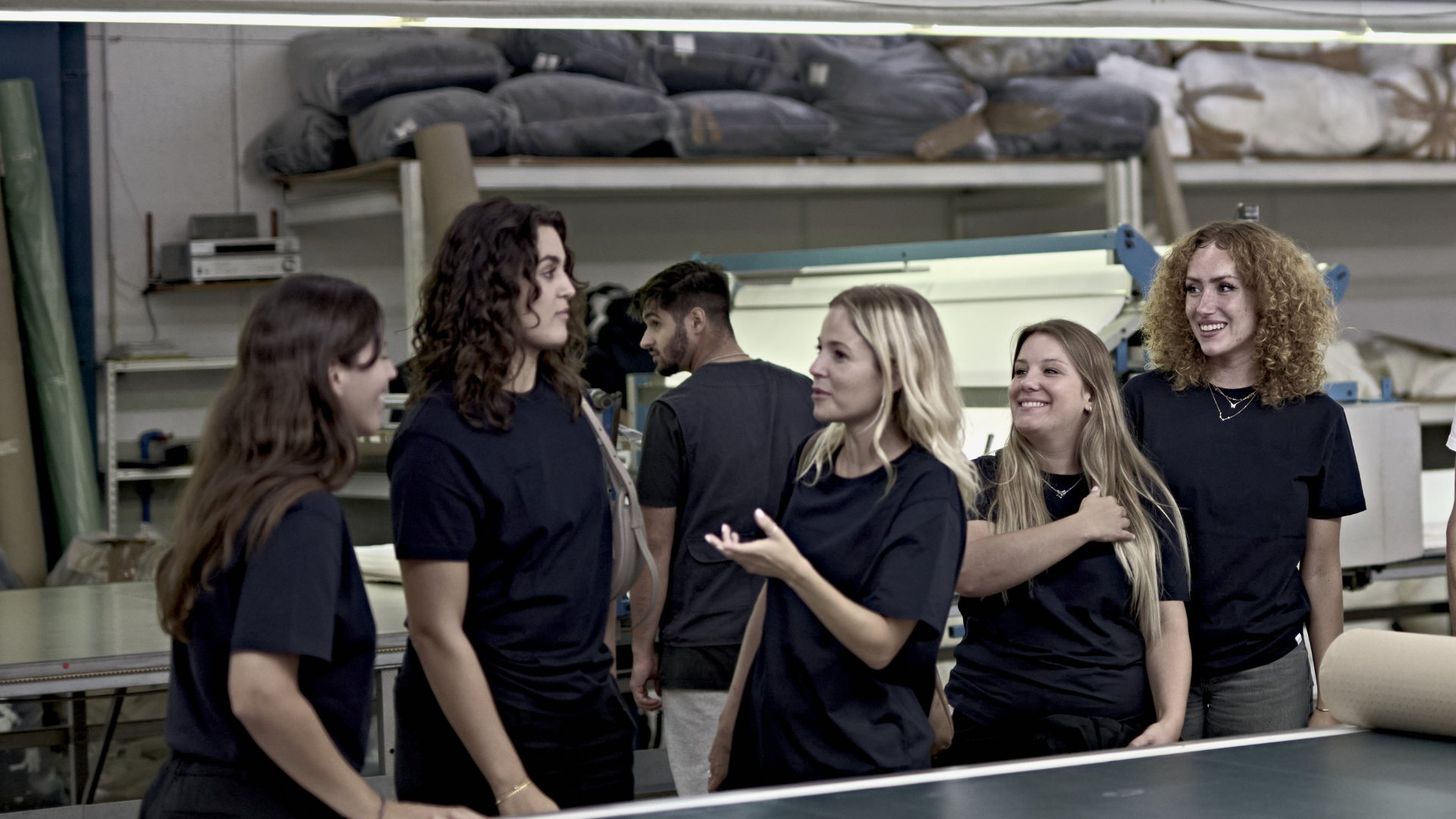Bevorzugte Sprache auswählen

Anyone who owns a jumper, scarf, hat or functional underwear made from merino wool knows how incomparably soft it feels and how high-quality this natural fibre is. With the right origin and processing standards, merino pieces can also become a real fashion statement for sustainable fashion. SANVT explains why.
Among many other factors, the sustainability of a garment is first assessed by the renewability of the materials used. While synthetic fibers like polyester are derived from non-renewable petroleum, Merino is a natural fiber that grows back every year. The wool is shorn from Merino sheep—native primarily to Australia and New Zealand—once a year in the oceanic spring (autumn in Europe).

The perfect layering piece for colder days: Manuel wearing the Merino Sweater in Grey over an Oxford Shirt.
Talking about true sustainability also means considering ethical aspects. A product can only be called sustainable if its production minimizes harm to the environment. In the case of animal-derived products, animal welfare during fiber sourcing becomes a central issue. The wool industry has been criticized repeatedly for poor treatment of animals, with the practice of “mulesing” being particularly controversial. This painful procedure is carried out to prevent parasitic infestations.
Bottom line: If you want to buy a sustainable Merino garment, the best choice is one certified under RWS. It not only guarantees mulesing-free wool but also ensures that production minimizes environmental impact.

If you would like to get to know Nadja and her role at SANVT even more, read her full "Meet the SANVT Team" article here.
But sustainability doesn’t stop with standards and production. For a garment to be truly sustainable, it must be worn for many years. Minimalist designs help make this possible. By consciously avoiding trend-driven fashion pieces that go out of style after just one season (if not sooner), timeless essentials remain in your wardrobe longer.
Another crucial factor is quality—particularly durability. Certifications mean little if the fabric loses shape or starts pilling after a few washes. This is where Merino, the luxury fiber, comes into play again. Its natural elasticity allows the fibers to stretch up to 30% without losing shape. In short: even with frequent wear, Merino garments retain their form.
Merino fibers also have a natural crimp that enhances their resilience. This crimp not only makes them less prone to wrinkling but also provides thermal regulation. The crimp traps tiny air pockets that act as insulation during cold weather. At the same time, Merino manages heat and moisture when the body warms up, such as during sports. The fibers can absorb up to 30% of their own weight in moisture without feeling wet. They gradually transport moisture away from the skin and release it into the air.
Takeaway: Whether thermoregulating in winter or breathable during workouts, Merino is incredibly versatile—making it a truly durable and high-performance natural fiber.

At SANVT, we have embraced the benefits of Merino for our Merino collection. As with all our essentials, we focus on longevity through quality. For both our Merino Roll Neck and Merino Sweater, we source fine Super Geelong yarns from the Geelong region of Australia. These yarns not only deliver exceptional softness but also ensure high durability and breathability.
Each piece is carefully hand-knitted in Portugal, then shipped to our warehouse in Southern Germany, from where they are sent to customers. Our entire knitwear collection is RWS-certified, meaning all our Merino sweaters are also guaranteed mulesing-free.
Merino is much more than just a luxurious natural fibre – it embodies a holistic approach to responsible fashion. When the origin, animal welfare and production processes are transparent and certified, the result is a garment that is not only ethically sound, but can also be worn for years to come. Minimalist designs that transcend trends and the exceptional durability of the fibre make merino a real investment piece.




